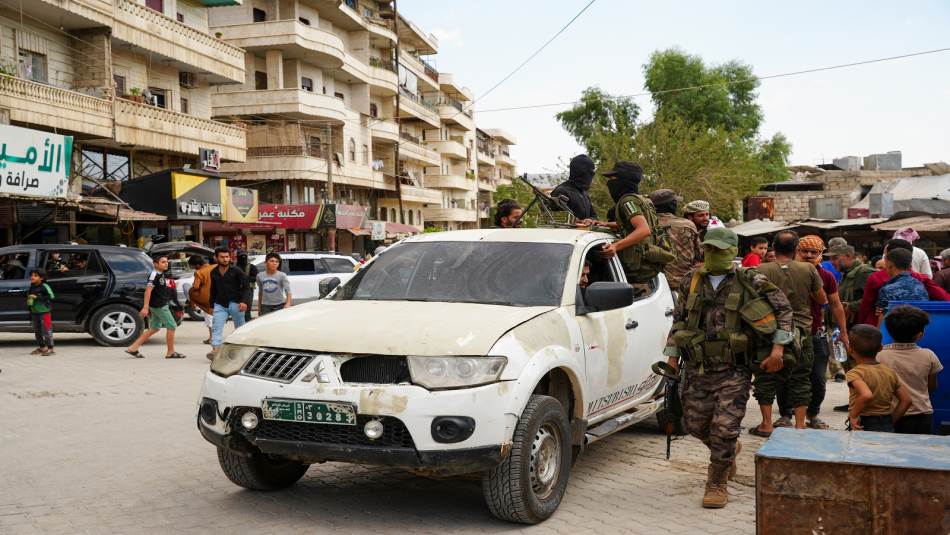There is a sense that the battles in Deir-ez-Zor serve as a prelude to significant and potentially dangerous developments unfolding on the broader Syrian stage. These clashes carry implications beyond local confrontations, extending to involve the regime, its militias, as well as regional and international powers with vested interests. The region itself where these battles take place has been the subject of speculation, analysis, and information suggesting a project to gain control by leveraging armed forces from local clans and members of the SDF to disrupt the Iranian supply route on the Iraq border.
At present, the parties involved in implementing this American project are engaged in battle, while the United States merely issues a delayed call for dialogue and the cessation of armed conflict. These clashes have exposed tensions among the region’s residents, including the SDF and those who are a part of it. It has become evident that a considerable number of SDF fighters hail from the same clans they are currently facing off against. Many joined the SDF at various times due to limited livelihood opportunities in the area, seeking financial gain.
Latest Field Developments in Deir-ez-Zor: Decisive Battles in Dhiban and Shuhayl
These battles underscore that the situation in Syria is far from stable, contradicting the narrative propagated by some attempting to normalize relations with Bashar al-Assad’s regime. Two years of apparent stalemate concealed an intense and ambiguous situation, a major crisis that went unresolved while Deir-ez-Zor’s battles are indicative of its underlying danger, a persistent fire beneath the surface, even if momentarily alleviated.
The existence and control of the SDF over approximately one-third of Syria’s territory is an anomaly and a direct outcome of the failure to address the Syrian crisis comprehensively and fairly. Regional and international interventions, either supporting or opposing the regime without ousting it, created a geopolitical fait accompli in Syria. The SDF emerged as a tool or effect of this interference, similar to the Iranian presence in various forms—militias, sectarian influence, and economic interests.
The clashes in Deir-ez-Zor led to the SDF’s defeat in multiple areas against local clans. Clan fighters even managed to seize control of joint military sites shared by the regime and the SDF. The geographical realities of the eastern Euphrates have shown overlapping alliances and deals among groups that would normally be considered enemies or rivals. Amidst these complexities, the area’s long-suffering residents, neglected for decades under Assad’s rule, find themselves living in a zone of regional and international competition over oil, gas, and strategic assets.
Politically, the situation is even more intricate. The SDF enjoyed American backing that enabled its expansion, often at the expense of Arab-majority regions. This proved a significant miscalculation by the United States, which underestimated the loyalty of Arab tribes in the Syrian desert. By aligning itself with the SDF, it failed to recognize the mismanagement and ignorance that would lead to failure, resentment, financial losses, missed opportunities and potentially lives as well.
The United States now mediates to halt fighting before the situation spirals out of control. However, another entity closely observes, ready to seize American interests and establish itself as an influential force on the Iraq border—Iran. Iran may provide immediate military support to Arab clans in the east of the Euphrates, countering the regrouped SDF, in exchange for an Iranian presence in the region.
The people of eastern Syria face a challenging dilemma between the SDF and Iranian militias—both capable of inflicting harm. Adding complexity, Turkey, interested in the SDF’s defeat, lacks the immediate means to support clan fighters due to geographical constraints. If quick action is not taken by the Americans to acknowledge ground realities and by the Syrian people in other regions—particularly the north and Idlib— to support the clan fighters, the Iranians might gain a valuable opportunity that aligns with their ambitions. A swift and inclusive initiative by Syrians could reshape the situation, bypassing the need for American or Iranian intervention—an approach that resonates deeply with the aspirations of Syria’s revolutionaries.
This article was translated and edited by The Syrian Observer. The Syrian Observer has not verified the content of this story. Responsibility for the information and views set out in this article lies entirely with the author.


